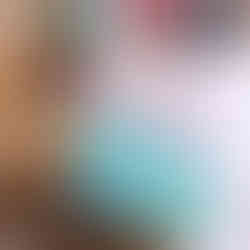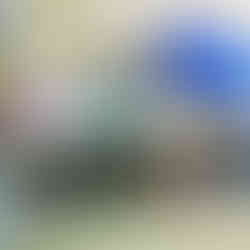Create a Mini Watercolor Palette
- Catherine Wade
.png/v1/fill/w_320,h_320/file.jpg)
- Oct 14, 2020
- 4 min read
Updated: Oct 15, 2020
** This post contains affiliate links**
Have you ever opened your giant 48 color watercolor palette and just look at it with a dumbfounded look at where to start? Or maybe you look at it in awe because there are so many beautiful colors to play with.
If you’re like me, you see it both ways. sometimes I open it and I'm excited to play with all the premixed colors and other times I just want to work with the basics and keep it clean and simple.

I've been trying to work more with color mixing and using a limited palette. I think this is such an important practice because it forces you to learn color theory. Color theory helps you to understand how different colors work well with each other and how to use them to your advantage to get the result you want.
Every artist should know how to mix with primary colors to get secondaries and tertiaries, as well as know how to lighten and darken the colors they have.
This post will show you how I made a limited palette with my half pan watercolors using an Altoid tin, paint, modeling paste, and a tape roller (you can use any tin and adhesive that you want though).
SUPPLIES
Metal tin or container to put paints inside
Paint
Paintbrush
An adhesive such as a glue roller, regular glue, or magnets
Watercolor paper
If you are doing the modeling paste version
Scraper or palette knife
Sandpaper
THE TIN

First I had to acquire a small tin. I went with an Altoid tin because it’s a good size and fairly easy to get at any Walmart, Michaels, or gas station. But you can also buy small tins like this on amazon.
Next, I obviously had to empty the tin since we can't very well put paint in it if there are tons of mints taking up space. After emptying the tin, I rinsed it out with water and dried it with a paper towel.
DECORATE
There are two ways that I decorated my tins.
1. The first way was the simplest and I just took some acrylic paint and painted the lid, so it didn’t have the Altoid colors on it. This is not necessary if you opt for the plain tins you can buy online. But I went with the Altoid’s, so I wanted to cover them. You can still see the raised parts of the tin where it says the name, but you can also put stickers or other things on top of the lid to cover it if you want to.
2. The second way to decorate the tins is by using a modeling paste like this to cover the entire surface of the tin and fill in the cracks between the raised logo. This route takes a little longer, but it results in a nicer looking lid.
First, you will need the modeling paste and some kind of scraper to lay down the paste.
Then you will take the paste on the scraper and slide it across the top. I found that if I did this with a lighter touch, it went on a lot smoother than if I used pressure.
I did two layers of modeling paste to ensure that I got it smooth enough and filled in all of the cracks, but the amount of paste you use is entirely up to you.
Once all the paste has hardened completely, I left mine to set overnight, I used some sandpaper and smoothed out any rough edges and smoothed out the overall surface.
After the lid has been covered with the paste and sanded down, you can go in with acrylic paints and paint the lid however you want to.
WATERCOLORS
While the modeling paste and/or paint is drying, you can set the tin aside and go to your watercolor set to pick out what you want inside. I was able to fit ten half pan colors inside my tin.
I have been watching Emma Lefebvre’s YouTube videos (click here to watch) on color mixing, so I tailored my colors to what she uses.
The colors I had that matched the closest to what Emma suggests are; brilliant yellow, crimson, fluorescent pink, turquoise, ultramarine, violet, blackish green, and leaf green. Then I added on flesh orange and Payne’s gray because I thought they could be useful additions. I also made a second palette with additional favorites of mine including; burnt umber, yellow ochre, burnt sienna, deep black, cerise, mauve, olive green, and lake blue. All of my colors come from a larger palette you can find here.
To get the pans to stick to the tin you can use a variety of adhesives. You could get small magnets like these so they are easy to take out and put back in. You could use glue to more permanently adhere them to the tin. I used a glue roller and I think it worked really well to help keep the paints in place, but it isn’t permanent so they are easy to remove and put back in place.
I would suggest taking a small cut of watercolor paper and making yourself a mini paint swatch that you can keep inside the tin. This way you can tell exactly what colors you have. I know it can be kind of hard to tell the difference between my ultramarine and violet so the swatch helps me quickly see what color I am getting.
And voila! You now have a little limited watercolor palette. You can use the lid as a mini mixing palette as well. It's quite small, but it still works.
Now you can practice your color mixing and improve your skills with your mini tin watercolor palette! This palette is also great for traveling because it has all the colors you need in a convenient little case. You just need a water brush, some paper towels, and paper.
I hope you guys enjoy your mini palettes as much as I do, and I would love to see your unique creations! If you want to share them with me, comment below or tag me on Instagram at @marbelladesignshop.
Love you, sweeties!
.png)






















Comments